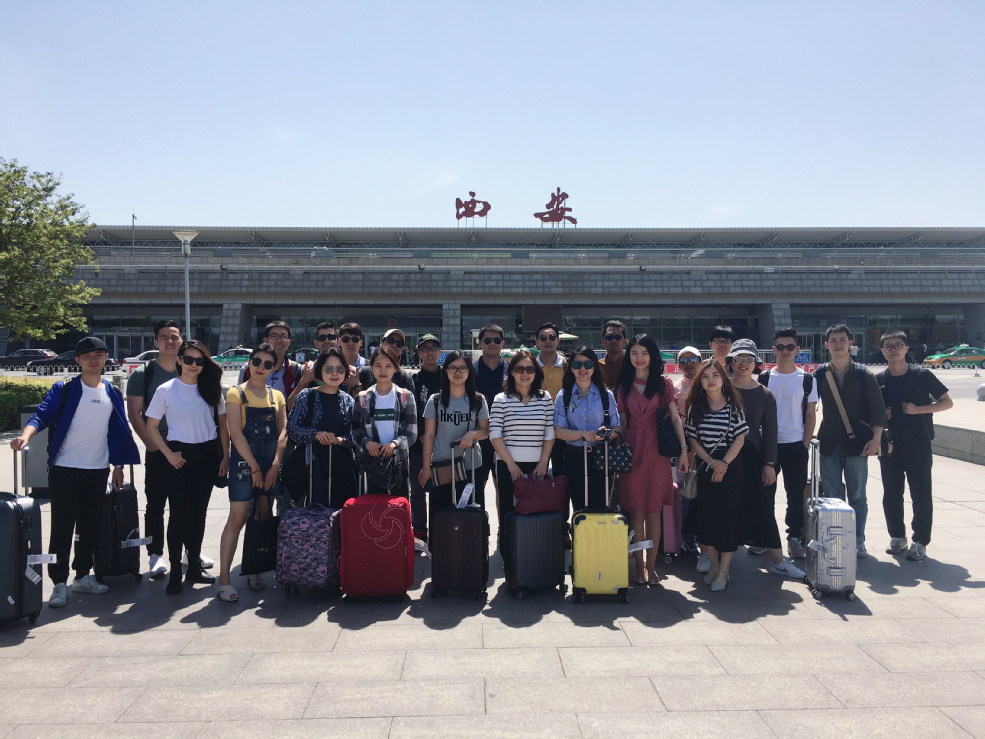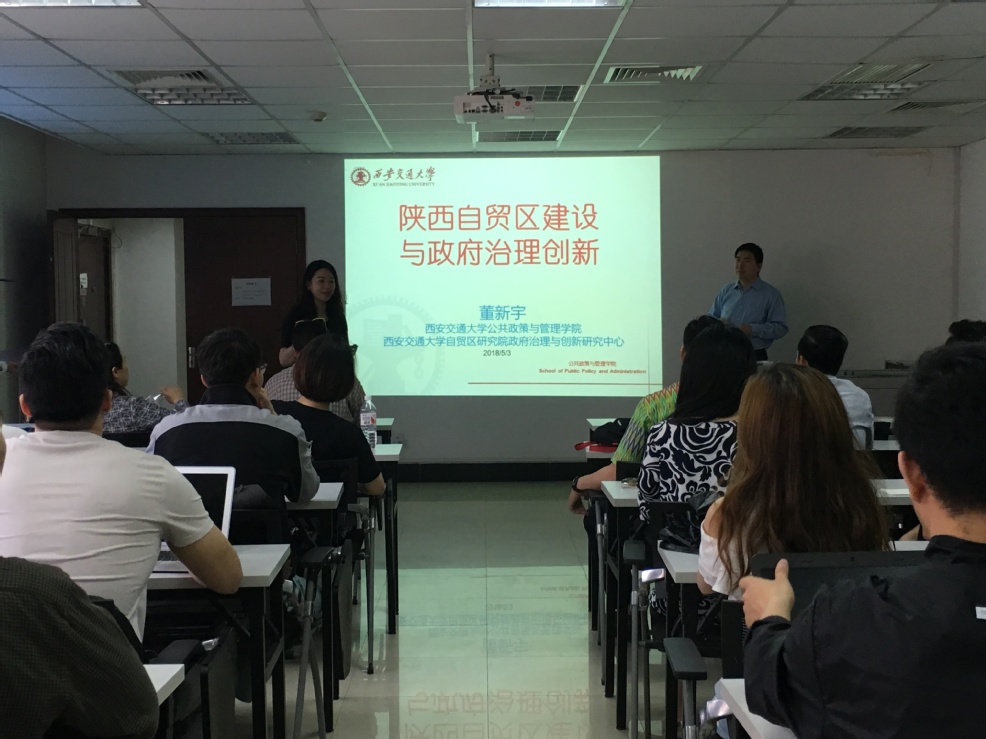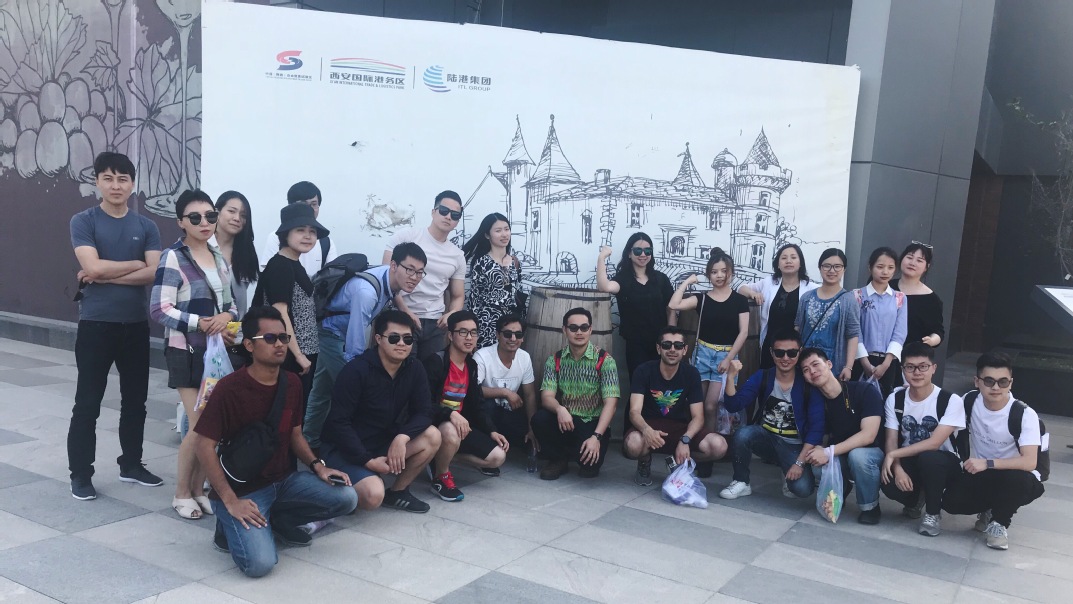Xi'an is one of the most significant historical and cultural centres of China, and for 13 dynasties, was the capital of the country. It is a rapidly growing city in the province of Shaanxi with a population of about 12 million people. The city exists for more than 3100 years, and surprisingly, for the 3 millennia of its existence, Xi’an has managed to become one of the largest cities in the world for several aspects such as area, population, economy etc. At present, the city still does not consider itself to be young, it is still developing, and construction sites are everywhere. Furthermore, Xi’an is one of the most beautiful and touristic cities of China, and therefore, maybe, it was chosen as the destination for the field trip for Asian Future Leaders Scholarship Program.

Our first impression of Xi’an was its impeccable climate. It was neither so humid like Hangzhou, nor so dry. Many students, especially those who are from landlocked countries, had also admitted that. Right after coming to Nanyang hotel from the airport, we went out to discover this amazing city. The first destination was Muslim Food street, which was recommended us by our tour guide and many friends who had been here before. The Muslim street of Xi'an was a great place to take a leisurely walk and try some new tastes of local cuisine. On the booths, stretching along the narrow streets, almost any kind of food that can be imagined is sold. Thousands of stalls placed along the two sides of the long street had various kinds of delicious food, and all the places were covered by visitors.
On the way back, we saw city walls which resembled The Great Walls. The ancient city wall is one of the main historical attractions of Xi'an. The wall was built more than 700 years ago. It is very tall and thick and it stretches for many kilometres. The taxi driver informed us that a lot of foreign and Chinese tourists come here every day and visit that city wall. We were highly recommended by the taxi driver to go up the wall and to look through amazing view riding a bicycle on the walls.
On the second day, we were divided into small teams of 3 to 4 members and had to choose topics from our field of interests to do our research in this city. Then we visited Xian Jiao Tong University which is considered to be one of the most prestigious universities in China. There we had a lecture titled “Governance in Xi’an: A city from which thirteen Dynasties` history of China to an international metropolis”. The lecture was given by Deputy Dean Dong Xin-yu from School of Public Policy and Administration of Xi’an Jiao Tong University. He briefly explained us the history and present of governance practice in Xi’an.

In the afternoon, we visited Pilot Free Trade Zones which were newly built after Party Central Committee’s approval on 31 August 2016 and considered only such zones in the north-western regions. In addition, we had a chance to talk to local people and government officials to have more detailed information for our research.
What are the importance of Pilot Free Trade zones for Xi’an?
According to Professor Dong, the free trade zone can contribute to the development of Xi’an both directly and indirectly. The three free trade zones in Xi’an can attract investments, propel the trade between Asia and Europe, and spread agricultural technologies to other countries. Moreover, free trade zones are the frontier of administrative reform in Xi’an. They try to better the local service and improve the efficiency.
As it becomes clear from the name, the Free Trade Zones in China are “freer”, unlike other regions of this country, including taxes. Corporate tax is 16.5%, respectively, it is equal to the corporate income tax in Hong Kong. This is two times less than the taxes paid by traditional Chinese companies - about 30% of the profits. Free trade zones reduce the bar for international companies that plan to open a company directly in China. Previously, most investors would prefer Hong Kong, but now Shanghai and other Free Trade Zones can boast of their low tax rates. Shaanxi Pilot Free Trade zones have made ambitious plans development strategy for the near future. According to their development goals:
“Shaanxi Pilot FTZ, as approved by the State Council, over the next three to five years, will establish a system for institutional innovation in accordance with the best international investment and trade practices, while also nurturing a conducive, globally-minded business environment. Every effort will also be made to construct a high-level, high-quality free trade park, offering first-rate investment and trade facilitation services. Moves will also be made to nurture a cluster of high-end industries, while additionally providing a high level of financial services and fostering greater connectivity between different cultures and individuals. Through effective and informed oversight, it will also create and sustain a legally-compliant commercial environment, which will, in turn, facilitate the implementation of both the Belt and Road Initiative and wider moves to develop the western region”.
The following day, we had another interesting, as well as informative lecture on “Administration efficiency revolution in government of Xi’an”. The lecture was given by Associate Professor Yan Bo from School of Public Policy and Administration of Xi’an Jiao tong University. During the lecture, the professor mainly focused on the progress of efficiency revolution in government of this city. While being present at the lecture hall, we heard that after recent changes in the administrative office, the development of the region started to increase remarkably. When we were going on taxi during free research time, we asked local taxi driver about changes in the city. He said that the city indeed has seen considerable changes in terms of infrastructure and administrative system. “But there are still many things to do”, he added.
What were the main changes in the administration system in Xi’an recently?
According to Professor Yan, the biggest change is about the Comprehensive Performance Improvement, so called “Xiaoneng(效能)Reform”. The reform covers three parts:
First, Power Regulation;
Second, Capacity Building;
Third, Accountability & Incentive.
Nowadays, the officials are paying much attention to improvement of the Administrative Examination and Approval in Xi’an.
In the afternoon, we visited government office to get acquainted briefly. There we had a small meeting with the staff and had our questions answered by them.
Another interesting activity on that day was the meeting with our seniors who graduated in Zhejiang University in AFLSP program and currently working in public sector in Shaanxi province. They shared their experience on academic life and career. And gave us some useful advice on planning our future career.
On the last day of our stay in Xian, we had an opportunity to visit Xian’s most famous sightseeing, Terracotta Army which dates back to III century BC. Indeed, we should not have missed to visit this amazing place. Before, I saw this place on TV, internet websites, read a lot about this, but seeing it in real life remained unforgettable experience on me. This unique monument of antiquity was discovered by local farmers accidentally when they were digging a well on their land in 1974.
Terracotta Army, consisting of 8 thousand soldiers in full combat equipment, horses and chariots, since 210 BC guarded the peace of the first emperor of China, Qin Shi Huang. The mausoleum of the emperor is next to the museum of the Terracotta Army. Indeed, this site plays of great role in attracting tourists to this city and contributes a lot to the economy. Notwithstanding, it is not fully discovered yet, due to lack of technology and effort. As the tour guide told us, there are more than hundred pits where many other terracotta figures were buried, but only three pitches containing eight thousand soldiers have been opened so far. Also, first Qin Emperor’s tomb remains unopened yet, maybe, because of concerns over preservation. Once the closed parts of this historical site are discovered, the number of visitors also would increase sharply.
In the afternoon, we visited the museum of Xian and we had time for free research. The Shaanxi Provincial Museum in Xi'an and the Chinese Capital Museum in Beijing are the two largest historical museums in China. The museum features historical relics found in various parts of the province.
To put it in a nutshell, I pen down saying that we gained a lot of useful knowledge and experience from this amazing trip. Well-planned schedule and time management let us spend our time efficiently. After theoretical information in the lectures and seminars, we had chance to observe that in practice while visiting free trade zones and administrative offices. Moreover, I asked my groupmates to describe our Xi'an field trip with just THREE words or expressions. Obviously, most of the impressions are quite positive. Their answers are following:
Artyom Tsaturyan: “Pretentious, melting-pot, business-oriented”.
Aldrin Chandra: “Local government reform, economic development, great civilization”.
Gaby Chan: “Polluted environment, amazing people, not enough done to preserve its rich history”.
Yura Hyeon: “Food, Muslim(Huiju), largeness!”
Najmuddin Gujarawal: “Nice food, historical, attractive”.
Zhannur Soltangazina: “Rich history, developed trade, kind people”.
If I describe that trip with three words and conclude my report, I can say that it was the “Best Field Trip” so far, and I hope that it is just a beginning part of our pleasant journey and amazing experience in China.



